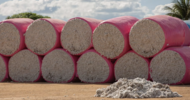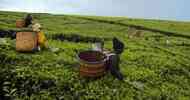When plans for a Grassroots International site visit to Brazil suddenly included my name last winter, I was thrilled. Oh boy! I could visit with our partners in country and learn directly from them their struggles, their hopes. I told Saulo Araujo, Grassroots’ Coordinator for Mesoamerica and Brazil (and my to-be traveling companion) that I wanted to talk to the people who ultimately benefit from Grassroots’ funding.
Saulo listened well, I realized the first time I saw the itinerary he pulled together—no office visits to be found. Instead, we were scheduled to visit encampments, settlements, and various on-the-ground projects.
Now that we are half-way through our trip, I realize two things. First, it was the right decision to spend more time in the field because the tenacity and vision of the peasant groups funded by Grassroots International is truly impressive. And second, Brazil is a big country, full of very bumpy dirt roads with seemingly no driving rules.
After missing just one of three flights on our way to Brasilia, we met up with Elias, a member of the Popular Peasant Movement (MCP), a Grassroots International partner, and began the driving portion of our trip out to Perionopolis, Goias. Over the next few days in Goias, we met with the women’s collective, learned about the Creole seed project, and finally met with farmers who were literally surrounded by an incursion of sugar cane and its industrial toxins.
Goias is the state of Brazil closest to the capital Brasilia, and holds much of its most agriculturally fertile land. This, unfortunately, has made it a prime target of large scale industrial farms run by agribusiness, particularly sugar cane for the fuel based on ethanol. Vast swaths of formerly biologically diverse land is filled with sugar cane in various stages of growth—from freshly burned fields to stalks as high as eight feet or more.
We met Elisa and her husband João Antonio Rosa in Barreirinhas. Over 40% of the territory is now covered with sugar cane. Their little house – about 10 feet square – sat next to a small water reservoir and was surrounded by nothing but sugar cane as far as the eye could see. This is what they call a “green desert”.
“Sugar cane is creating problems for us,” said Elisa. “The soil is getting weak and production has been decreasing. The rain drives all the agrochemicals, chemical pesticides and chemical fertilizers, downhill and contaminates our fields and our water.”
I asked her what crops they grew: “We used to plant corn, cassava and other crops to eat. But now we cannot even make flour from the cassava because of the ashes from the burning sugar cane. We also used to produce beans, but the land is too weak now.”
João adds, “The company cut down all the trees during the night. And the trucks and drivers are destroying all the fields. There are not many trees left anymore.”
On our ride to Elisa and João’s home, we passed a house where a farmer had just killed himself earlier in the week. Suicide is becoming a common reality in Barreirinhas, as families are talked into “renting” their land to the sugar cane companies. Many then work the fields as sugar cane cutters but never make enough money to sustain themselves. The leases favor the company, often leaving almost nothing for the families, and can last for four sugar cane cycles, which is about 12 years.
João takes off and puts back on his flip flops—the common footwear of the peasants who work the fields. “The company harasses people to rent their land, especially if someone is having a bad time. They promise money, but it doesn’t work out that way.”
Members of the MCP have been working with farmers in the region to educate them about the dangers of renting out their land, as well as the dire consequences of sugar cane for the community. In Elisa and João’s small community, there were 12 families. Ten rented their land, leaving only two.
As we travel the dusty roads, we can see empty houses where families would once sit on the porches after a long day of work. For these families, the road ahead will be long indeed.
Carol Schachet is the Director of Development and Communications at Grassroots International.












